The initial German deployment of guided bombs in the Bay of Biscay was worrying for Allied naval commanders, but the focus of the German bomber groups soon shifted to the Mediterranean. There, the Allies had recently taken control of Sicily, and it was only a matter of time until they landed in Italy. Germany would be ready to oppose them with their new weapons, and it was in the waters of the Med that the Hs 293 and Fritz X would have their day in the sun.
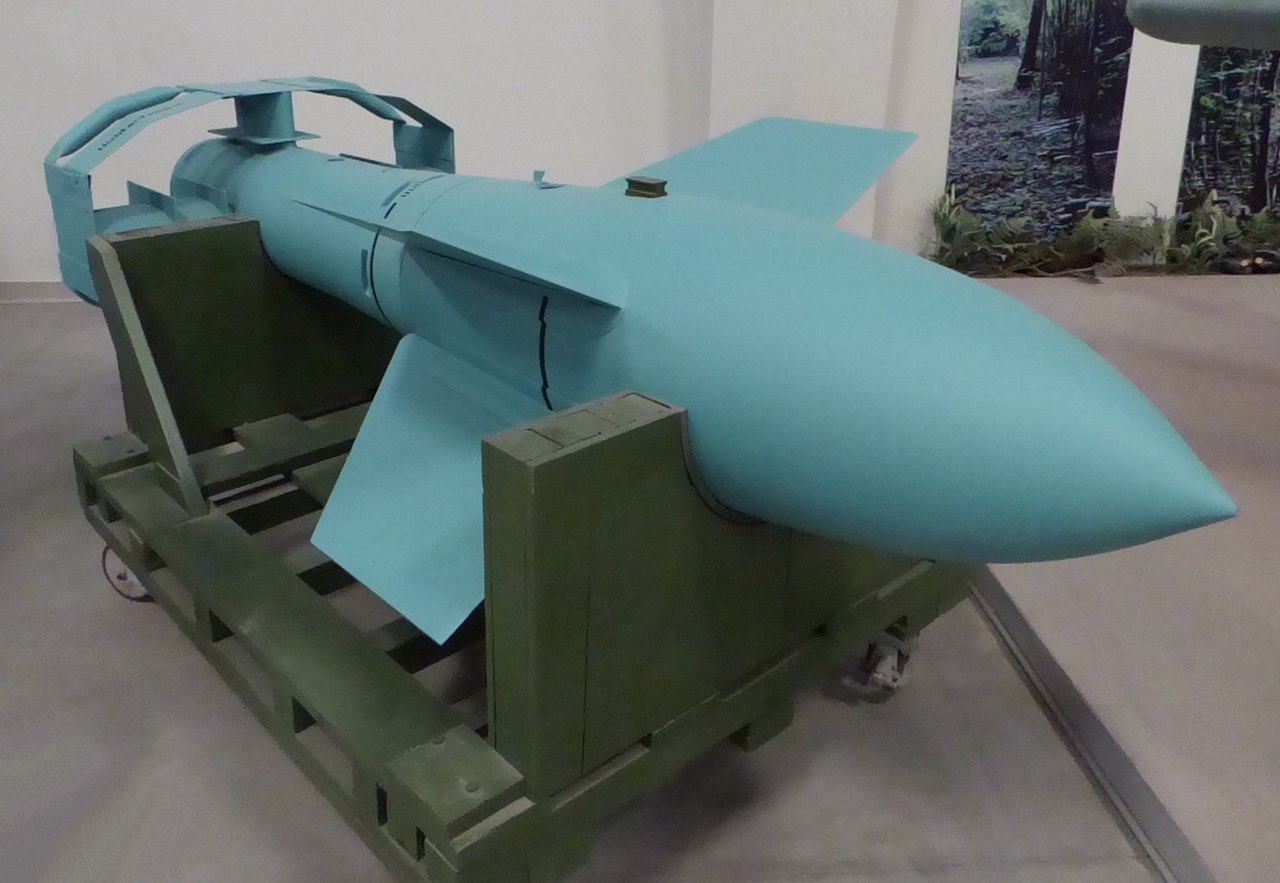
Fritz X
Fritz X was first used on July 21st, 1943, in a raid on the Sicilian harbor of Augusta. This raid, and several later raids through the end of August, were so ineffective that the Allies didn't even realize that a new weapon was being used against them.1 But events were moving swiftly that would soon provide the new weapon with an ideal target. Four days after that first raid, the Grand Council of Fascism overthrew Mussolini, opening the way for Italy to try to leave the war. On September 3rd, an armistice was signed, although it wasn't to be made public until the Allies began landing.
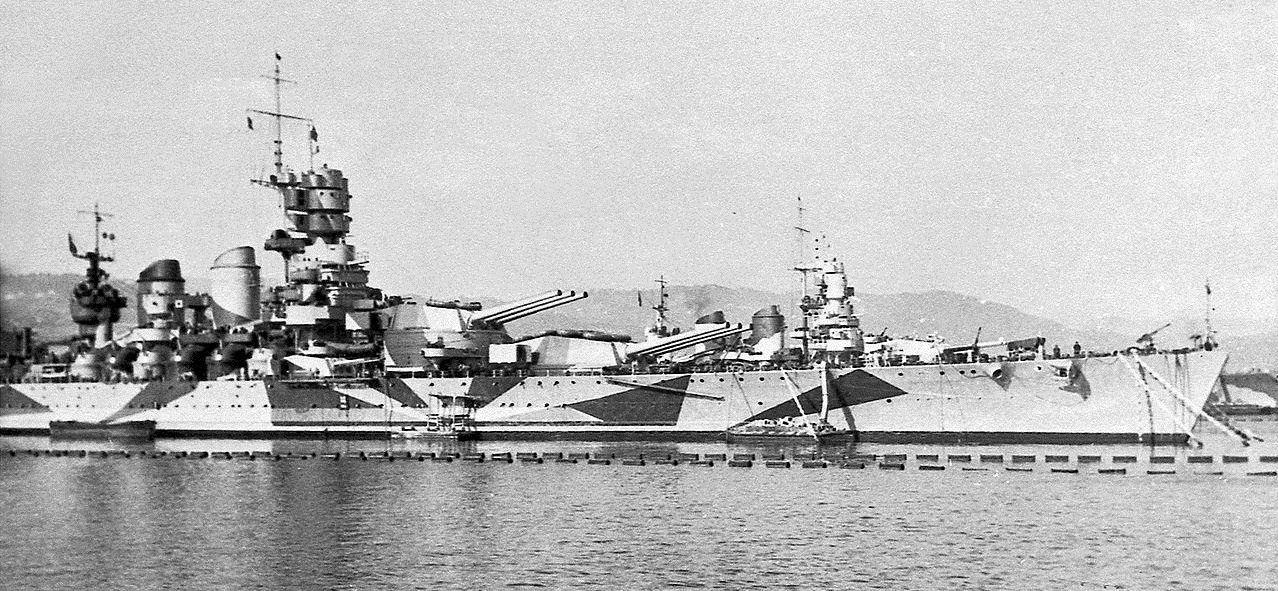
Vittorio Veneto and Littorio at La Spezia
One of the reasons for this delay was the Italian Navy. It had begun the war as the fourth-ranked fleet on the seas, and while its record in battle against the British was uninspiring at best, its existence had still tied down substantial Allied naval forces. The armistice was a golden opportunity for the Allies to remove this threat, and they insisted that all available ships of the Regia Marina head to sea to be interned in Allied-controlled ports. The largest and most visible of these vessels were the three ships of the Littorio class, based at La Spezia, in northwestern Italy. These were modern, powerful ships and the Allies were very interested in keeping them out of German hands.2
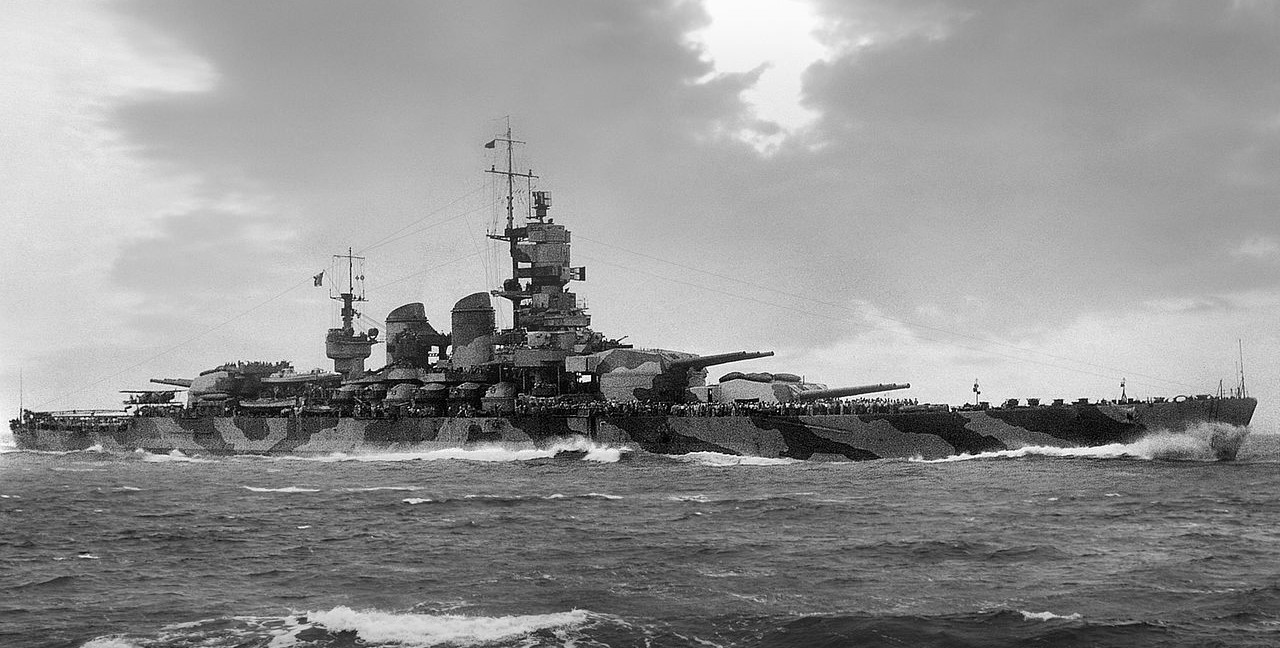
Vittorio Veneto
The Armistice was finally announced on September 8th, just hours before troops were to go ashore at Salerno. Italia,3 Vittorio Veneto and Roma sailed at about 0340 the next day, bound for Sardinia. At 1230, the Germans took possession of the naval base on Sardinia, and the three ships, with their escorting cruisers and destroyers, changed course for Algeria an hour later.
The Germans had been suspicious of the Italian dedication to continuing the war since the fall of the Fascists, and activated a plan to sink the escaping ships. Six Do 217s loaded with Fritz-Xs were dispatched from their base in Provence, and at about 1500 they appeared over the fleet, which was still north of Sardinia. 45 minutes later, after a conventional bombing attack, the first Fritz X was dropped on Roma.
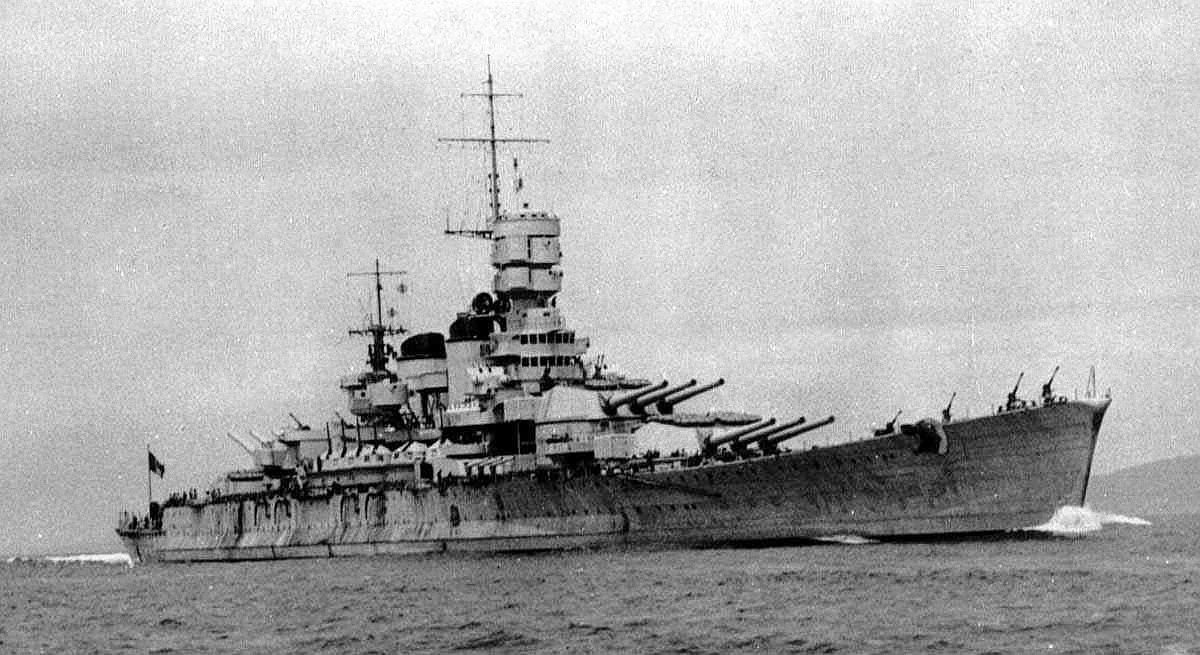
Roma
This Fritz X, unlike the ones employed in July and August, worked splendidly. It hit the battleship alongside the second funnel, near the starboard edge of the deck, at about a 70° angle, mostly inboard. The bomb passed through three armor decks, totaling 140mm of steel, and detonated underneath the hull. The aft engine room and two boiler rooms were destroyed, and there was extensive flooding. Power was lost throughout the aft section of the ship, but the crew quickly managed to restore it, as Roma staggered out of the formation.

The bomb hits on Roma
Six minutes later, the Germans dropped a second Fritz X on the damaged battleship. This one struck just aft and to port of Turret II. Unlike the first bomb, it didn't pass through the bottom before detonating. Instead, it went off just above the double bottom in the forward engine room, directly behind the magazine for Turret II, blowing out the bottom of the ship. Steam billowed from the ship as water flooded in, but it was overshadowed when, ten seconds later, the propellant in the magazine exploded.4 Turret II was blown completely overboard, and flames billowed three thousand feet into the air. Power was lost throughout the ship, and many of the sailors in the forward part of the ship were incinerated.
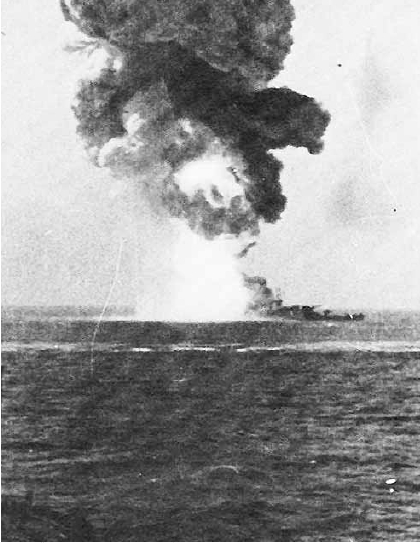
The explosion onboard Roma
Roma was obviously doomed, and the men who could scrambled to abandon ship. At 1615, she rolled over, broke in half, and sank. 596 men were fished out of the water, all but one from aft of the tower. 1,253 men were dead, including Admiral Carlo Bergamini, the commander of the fleet. The Italians opened fire, but the bombers were almost directly overhead, and the guns couldn't elevate enough to fire effectively.

The location of the hit on Italia
Fifteen minutes later, another Fritz X was dropped on Italia. This time, the Germans were slightly off their game, and the bomb hit near the starboard edge of the deck, between the forward turrets. It was falling 13° from vertical, and passed through two decks before it went through the ship's side and plunged into the ocean, exploding 6m from the side of the ship. The hole in the ship's side was 7.5m fore and aft and 6m high, and the blast did extensive damage to the Puligese torpedo defense system. A total of 1,066 tons of water flooded in, giving the ship a 3° list. A second near-miss temporarily disabled the rudder, but the Germans had shot their bolt, and Italia managed to continue under her own power.
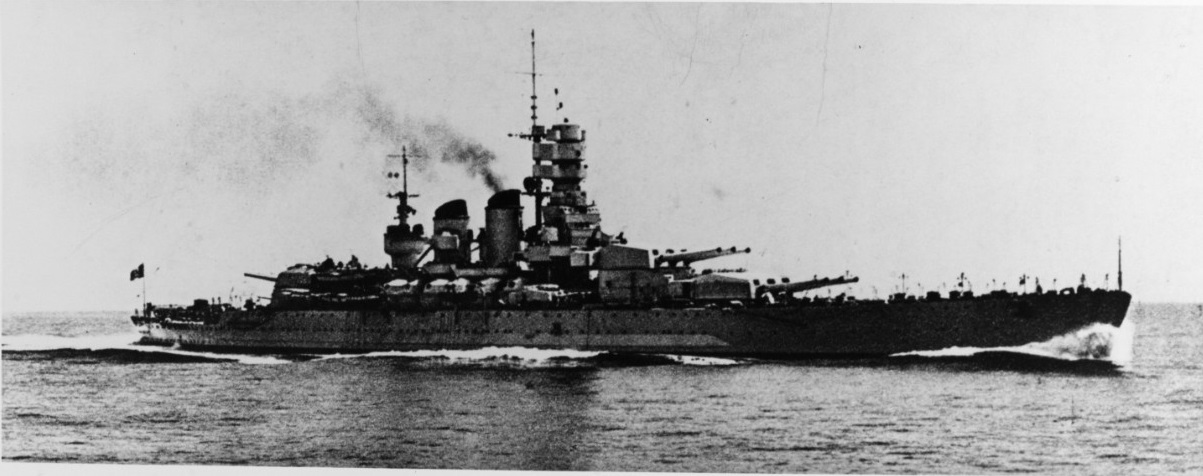
Littorio, later Italia, shortly after completion
The remaining Italian ships reached Bone, in North Africa, without further incident. The incident stunned the world's navies in a way that nothing had since the start of the war. Even Repulse and Prince of Wales had taken a lot of airplanes to sink. A bare half-dozen aircraft had sunk one modern battleship and damaged another, without ever entering the effective range of their defensive guns. The airplane had a weapon which made it a serious threat to even the most heavily armored ship, and which allowed it to stand well off from its target. Ultimately, naval warfare would never be the same. But the German weapons were still primitive, and their next test, against the Allies landing at Salerno, would reveal more problems.
1 I'm not really sure what the problem was, beyond the fact that the weapons were tricky to use. ⇑
2 The Italians even floated a plan to send all three battleships to the Pacific with Italian crews. This was not looked on fondly by the Allies, who were much more interested in simply getting them off the playing field. ⇑
3 This ship, originally known as Littorio, was renamed after the fall of Mussolini. Littorio was the Italian for lictor, a fascist symbol. ⇑
4 Technically, the powder apparently deflagrated (burned rapidly) instead of detonating. I'm going to invoke artistic license to justify my word choice. ⇑

Comments
As of this writing, the link in "and their next test" is to "https://www.navalgazing.net/German-Guided-Bombs-Part-2" I believe it should be linking to "https://www.navalgazing.net/German-Guided-Bombs-Part-3"
That would be correct. It's not the first time I've made that mistake, which is why I normally check those links. Guess I forgot this time.
I've read this article several times and this is the first time I noticed, myself.